
What Australia's booming population means for housing
Australia is in the midst of a population boom, driven by a surge in net migration following pandemic border closures.
What Australia's booming population means for housing.
Australia is in the midst of a population boom, driven by a surge in net migration following pandemic border closures. But with record low vacancy rates and deteriorating affordability, will we be able to house everyone?
In 2022 the population grew by record numbers – the largest ever recorded numeric increase in a calendar year according to the Australian Bureau of Statistics (ABS).
This growth is now continuing into 2023. In fact, it's accelerating.
ABS data revealed the highest national quarterly population increase on record in the March quarter, with the highest gains in migration Australia has ever seen.
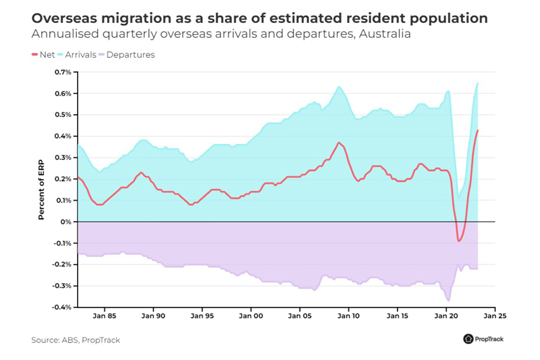
The increase was mostly through net overseas migration of 454,400 people, with fewer departures and a high rate of arrivals, equating to around 182,000 additional households.
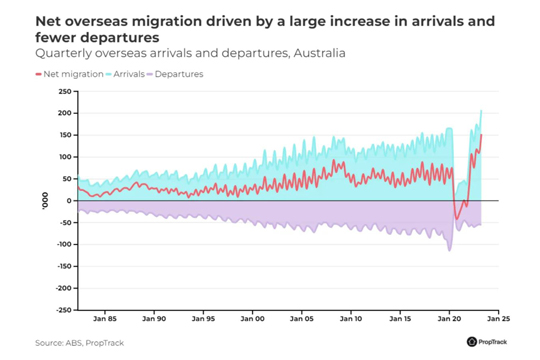
Although more recent official data is still to be released, there are many indications that the strong population growth has continued ¬– and accelerated – to even reach new historic records.
Net long-term and permanent arrivals show that strong net migration gain has continued in the June quarter and beyond.
Based on this, overall annual growth could clock another record of just north of 600,000 persons, considering the natural increase projections in the 2023–24 Budget.
These estimates driven by net migration gains are well above those forecast by the government in the latest Federal Budget.
Comparing migration gains to the average in the decade to March 2020 prior to the pandemic, shows an additional uplift of ~190,000 in 2022, and possible lift of ~300,000 in 2023, meaning net migration will have fully caught up the pandemic losses (~440,000) and will be ~50,000 additional by the end of this year.
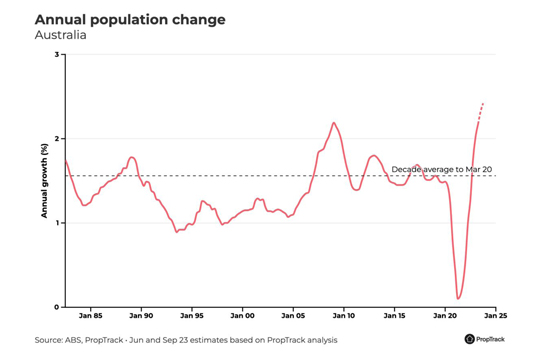
These excess gains are expected to begin easing in 2024 and 2025, but are likely to remain elevated in comparison to the pre-pandemic trend, adding to demand for housing.
Even now, search data shows the interest in Australian property from overseas has never been higher.
The implications for housing
Although capital city estimated residential population (ERP) updates are less recent than ABS data, we can use historic averages to estimate potential population gains at the capital city level. This data indicates there could be a very fast pace of growth in some cities.
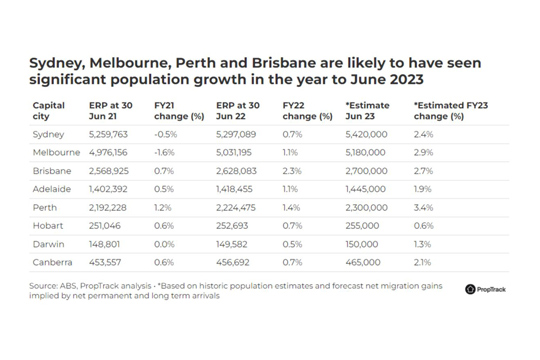
While it’s not a perfect measure (given factors like COVID-19 have affected the number of Australians moving interstate) we can roughly estimate that Sydney, Melbourne, Perth and Brisbane are likely to have seen significant population growth in the year up to June 2023.
This is likely to have contributed to the fast turnaround in home prices seen in 2023, alongside tight rental markets.
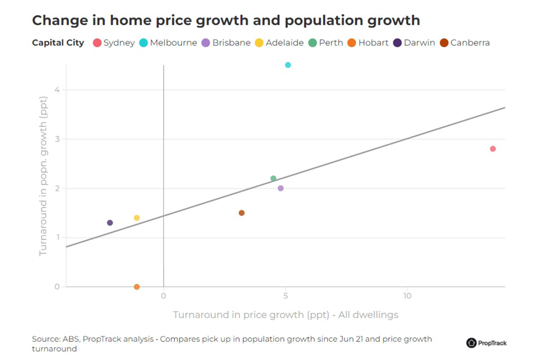
The reversal in price growth has been most significant in markets where population growth has picked up and rental markets have tightened the most.
However, it’s important to remember that population growth isn’t the only factor that can influence home price growth.
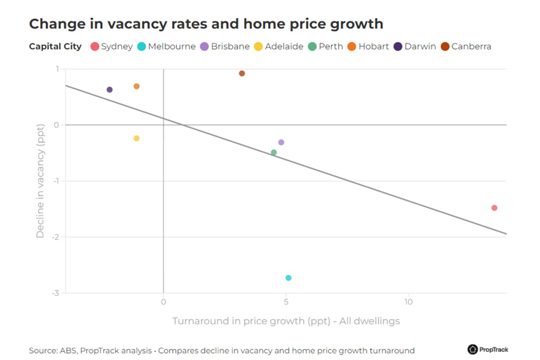
Another contributing factor is the average household size (AHS), which shrunk over the pandemic and resulted in significant additional demand for housing over 2020 and 2021. While the average size has started to increase again, it remains historically low at 2.49 people per household in January 2023.
While growth in migration is expected to ease in 2024 and 2025, against the backdrop of pre-existing housing supply issues, faster than expected population growth has added to a mismatch between housing supply and demand.
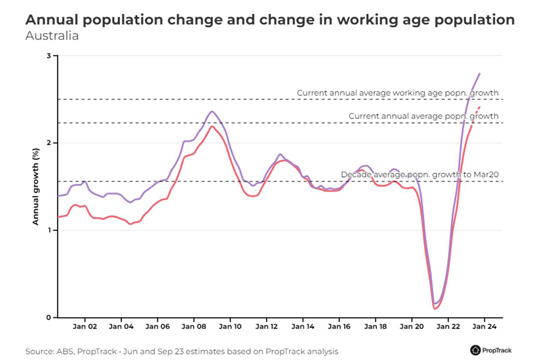
Using the official population change in the year to March 2023, a potential 226,000 additional families would have needed homes. Australia completed around 170,000 new homes over the year to March 2023, meaning a shortfall of around 56,000 homes based on population growth alone.
The growth estimates for the 6 months following March 2023 indicate that unless the pace of building activity steps up, we’ll see a further 41,000 shortfall.
While not all of our growing population would move into new homes, these numbers help us understand the current housing shortage and immediate supply issues, challenged rental market conditions and the worst affordability in at least three decades – these issues aren’t likely to be improving.
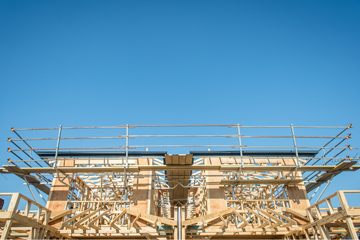
Picture: Getty
Governments have started to recognise the need for more housing, and in August, the National Cabinet agreed to build 1.2 million homes over the next five years.
As the population continues to grow, more action on housing supply will be required, as well as infrastructure and investment frameworks to maintain the liveability of our future cities.
A combination of fast-tracking new supply of more of the right type of homes built where people want to live, more medium-and high-density development, as well as policies that reduce the planning impediments that restrict new supply and encourage better use of existing homes can help ease constraints.
This article was originally published on realestate.com.au as What Australia’s booming population means for housing


